Affordable Contacts: How to Get the Vision You Need Without Overspending
Updated: Mar 31, 2025
Switching from glasses to contact lenses can be life-changing, offering convenience, better peripheral vision, and a glasses-free look, but the cost of contact lenses can add up quickly. Learn how to get the contact lenses you need at an affordable price and check out tips to save money without compromising on quality.

Understanding Your Contact Lens Prescription
Before you can buy contact lenses, you’ll need an up-to-date prescription from an eye doctor. Contact lens prescriptions are different from eyeglass prescriptions, and they include specific details about the shape and size of your eye.
Here are the key elements in a contact lens prescription:
- Base curve (BC): This indicates the curve of the lens and how it fits your eye.
- Diameter (DIA): The measurement of the lens’s width, ensuring it fits comfortably over your cornea.
- Power (PWR): The strength of correction needed for nearsightedness or farsightedness.
- Cylinder and Axis: For individuals with astigmatism, these values indicate the additional correction needed.
It’s important to have a current contact lens prescription, as wearing the wrong size or shape can lead to discomfort, irritation, or even serious eye problems. Most prescriptions are valid for one year, after which you’ll need to schedule a follow-up exam.
Start with an Affordable Eye Exam
Before buying contacts, you’ll need to visit an eye doctor for a contact lens fitting and prescription. Eye exams can be costly, but there are several ways to make them more affordable:
- Vision insurance: If you have vision insurance, it often covers an annual eye exam and sometimes even a portion of the cost for contact lenses.
- Retail chains: Opt for affordable eye exams at stores like Walmart, Costco, and Target Optical, where prices generally range from $50 to $100. These stores also offer package deals that combine the eye exam with discounts on contacts.
- Local clinics or optometry schools: Community health clinics and optometry schools may provide eye exams at a reduced cost. These are typically performed by optometry students under the supervision of a licensed optometrist, offering a budget-friendly option without sacrificing quality.
- Online vision tests: Some companies, like Warby Parker and 1-800 Contacts, offer online vision tests that can renew your contact lens prescription if it’s still valid. While these aren’t replacements for full eye exams, they’re a cost-effective way to update your prescription without visiting the doctor in person.
Types of Contact Lenses and Their Costs
The cost of contact lenses depends on several factors, including the type of lens, how often they need to be replaced, and whether you have special vision needs. Here’s a breakdown of the most common types:
- Daily disposable lenses: These lenses are worn once and then thrown away, meaning you’ll need a new pair every day. While convenient and hygienic, daily lenses tend to be the most expensive option, costing between $20 to $60 per box (a 30-day supply).
- Bi-weekly or monthly lenses: These lenses are worn for up to two weeks or a month before being replaced, with proper cleaning and storage required. They’re more affordable than daily disposables, with prices ranging from $15 to $50 per box.
- Toric lenses: Designed for people with astigmatism, toric lenses are often more expensive due to their specialized design. These can range from $30 to $70 per box.
- Multifocal lenses: If you need correction for both nearsightedness and farsightedness, multifocal lenses provide a solution. These lenses can cost between $50 and $100 per box.
While higher-end lenses can get expensive, it’s possible to find quality contacts at a lower price by shopping smart.
1. Shop for Contacts Online
One of the best ways to save money on contact lenses is to buy them online. Many online retailers offer lower prices than traditional brick-and-mortar optical shops because they cut out the middleman and deal directly with manufacturers. Here are some popular online retailers known for offering affordable contact lenses:
- 1-800 Contacts: A long-established contact lens retailer, 1-800 Contacts offers a wide selection of brands at competitive prices. They also have a price-match guarantee, so you can be sure you’re getting the best deal.
- DiscountContactLenses.com: As the name suggests, this site specializes in discounted lenses. They frequently run promotions and offer lower prices than many traditional retailers.
- ContactsDirect: This retailer offers competitive pricing and often has sales or discounts for new customers. If you have vision insurance, they’ll also accept certain providers to help lower the cost.
- Lens.com: Known for offering deep discounts, Lens.com often has prices lower than most competitors. They also have a rebate program, which can save you even more money.
- Warby Parker: While best known for eyeglasses, Warby Parker also offers contact lenses at reasonable prices. They even have their own brand of daily lenses called Scout, which are priced lower than many other daily disposable brands.
When shopping online, always check if the retailer accepts vision insurance or offers rebates and coupons that can further reduce costs. Be sure to compare prices across multiple sites to ensure you’re getting the best deal.
2. Look for Discounts, Rebates, and Coupons
Manufacturers and retailers often offer rebates, discounts, or coupons to reduce the cost of contact lenses. Here’s how to find them:
- Manufacturer rebates: Many contact lens manufacturers, like Acuvue and Alcon, offer rebates when you purchase a certain number of boxes, particularly for annual supplies. These rebates can save you anywhere from $50 to $200 depending on the brand and quantity purchased.
- Retailer discounts: Online retailers frequently offer first-time customer discounts, free shipping, or percentage-off deals. Sign up for email newsletters or check their promotions page to find current deals.
- Vision insurance: If you have vision insurance, check whether it covers a portion of the cost of contact lenses. Many plans offer an allowance toward lenses, or they may cover a percentage of the cost. Be sure to buy from a retailer that accepts your insurance.
3. Buy in Bulk
One of the easiest ways to save on contact lenses is to buy in bulk. Most retailers offer discounts if you purchase a six-month or 12-month supply at once. Buying more lenses upfront can lead to significant savings per box and can also make you eligible for manufacturer rebates.
Even if you don’t need a full year’s worth of lenses right away, purchasing a few months’ supply at a time often reduces the overall cost compared to buying one box at a time.
4. Use an FSA or HSA to Pay for Contacts
If you have a Flexible Spending Account (FSA) or Health Savings Account (HSA), you can use these pre-tax funds to cover the cost of contact lenses. FSAs and HSAs allow you to save money by using tax-free dollars for qualifying medical expenses, including eye exams and contact lenses.
Because you don’t pay taxes on these contributions, using your FSA or HSA can lower the effective cost of your lenses by up to 30% depending on your tax bracket.
5. Consider Generic or Store-Brand Lenses
Just like prescription medications, some contact lenses have generic or store-brand versions that cost significantly less than the name-brand counterparts. For example, Walmart, Costco, and Warby Parker all offer their own private-label lenses that are comparable in quality to popular brands but at a fraction of the cost.
Ask your eye doctor if a store-brand or generic alternative is available for your prescription, as this can lead to big savings.
6. Be Smart About Shipping and Subscriptions
When shopping for contact lenses online, always check the shipping fees. Some retailers offer free shipping, while others may charge a fee if you don’t meet a minimum order threshold. To avoid unnecessary charges, try to consolidate your purchases into one larger order or look for retailers that offer free shipping on all orders.
Many retailers also offer subscription services, where you can sign up to have contacts automatically delivered to your door on a schedule. Not only is this convenient, but some retailers provide discounts for subscribing, lowering the overall cost.
Conclusion: Clear Vision Without the High Cost
Getting the contact lenses you need doesn’t have to drain your wallet. By shopping online, using rebates, buying in bulk, and taking advantage of vision insurance, you can significantly reduce the cost of contact lenses. Whether you’re purchasing daily disposables or monthly lenses, there are plenty of affordable options to fit your budget, so you can see clearly without overspending.

